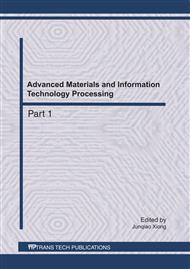p.933
p.939
p.945
p.949
p.955
p.961
p.967
p.973
p.978
Simulation and Analysis of Excitation System Accessorial Controlled by Two Input PSS
Abstract:
Founded two input PSS model,by making analysis the theory of Synchro- generator. Use New PSS model to be as a accessorial controlling of Excitation system of Synchro-generator. Founded and simulated the Excitation system including this New PSS in the transient condition based on MATLAB/SIMULINK. Compared the result of simulation, it indicated that the excitation system accessorial controlled by this PSS has nicer roubustness, increased Damp trait of the system,restraining the interference, low frequency oscillation and recover of short cut than the excitation system controlled by PID meth.
Info:
Periodical:
Pages:
955-960
Citation:
Online since:
July 2011
Authors:
Keywords:
Price:
Сopyright:
© 2011 Trans Tech Publications Ltd. All Rights Reserved
Share:
Citation:


